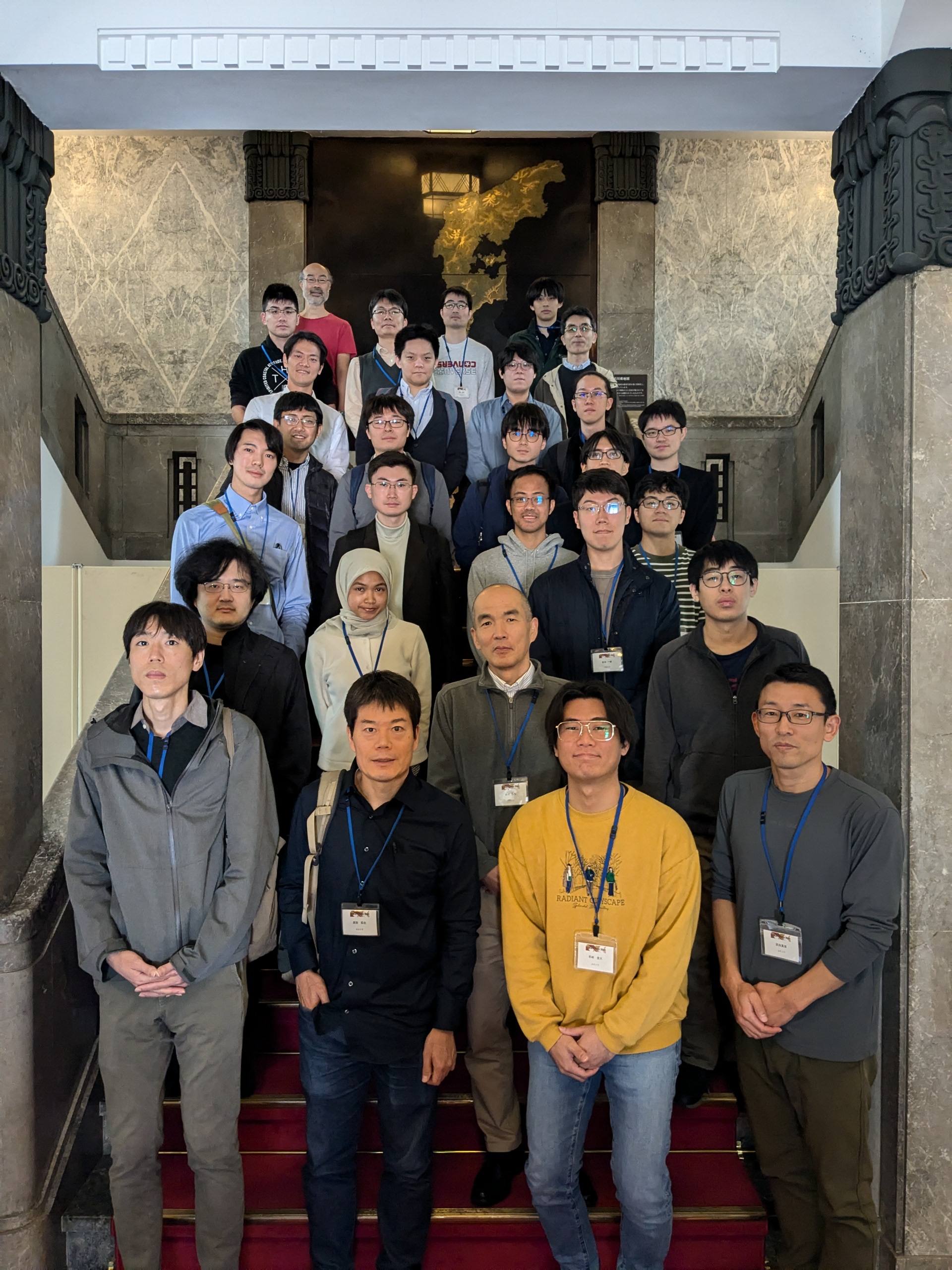


[Japanese・English]
Tensor network formulation of many-body systems are widely used in various research fields of sciences, bringing theoretical and numerical approaches from a different perspective from the conventional ones. Recently, tensor network-based ideas are also rapidly gaining popularity in the fields such as quantum algorithms, quantum computation, and machine learning. The aim of this workshop is to provide a broad overview of the recent progress based on tensor network formalism, mainly in the fields of particle, nuclear, and condensed matter physics, to encourage the exchange of information among different communities, and to stimulate new developments in the field of tensor networks.| 13:00-13:10 | Welcome |
| 13:10-14:10 | Satoshi Morita(Keio University)[slide] テンソルくりこみ群による相転移・臨界現象の解析 (J) |
| 14:10-14:30 | Break |
| 14:30-15:00 | Atis Yosprakob(Niigata University)[slide] Toward tensor renormalization group study of lattice QCD (E) |
| 15:00-15:30 | Ryo Sakai(Jij Inc.)[slide] Tensor network representation of non-abelian gauge theory coupled to reduced staggered fermions |
| 15:30-15:50 | Break |
| 15:50-16:10 | Yuto Sugimoto(Tohoku University)[slide] 4次元のATRGにおける高速化手法について (J) |
| 16:10-16:30 | Fathiyya Izzatun Az Zahra(Kanazawa University)[slide] Scattering Phase Shift by Tensor Renormalization Group Method (E) |
| 16:30-16:50 | Hayato Aizawa(Kanazawa University)[slide] 2次元格子CP(1)+theta模型のTRG法とCFTを用いた相構造解析 (J) |
| 16:50-17:10 | Break |
| 17:10-17:40 | Xinliang Lyu(ISSP, The University of Tokyo)[slide] Entanglement Filtering in 3D Tensor-Network Renormalization Group (E/online) |
| 17:40-18:00 | Katsumasa Nakayama(RIKEN)[slide] The construction and dependence of the initial tensor for the TRG with the Steiner traveling salesman problem (J) |
| 9:00-10:00 | Kenji Harada(Kyoto University)[slide] Tensor tree learns hidden relational structure in data to construct generative models (J) |
| 10:00-10:20 | Break |
| 10:20-10:50 | Tohru Mashiko(The University of Tokyo)[slide] スピン-1ハニカム格子模型におけるキタエフスピン液体-スピンネマティック秩序相転移 (J) |
| 10:50-11:20 | Wei-Lin Tu(Keio University)[slide] Generating Function for Projected Entangled-Pair States (E) |
| 11:20-13:30 | Lunch |
| 13:30-14:00 | Masahiko Yamada(The University of Tokyo)[slide] Matrix Product Renormalization Group (E) |
| 14:00-14:20 | Tomotoshi Nishino(Kobe University)[slide] Tensor Network in the Interaction-Round-a-Face (IRF) representation (J) |
| 14:20-14:40 | Break |
| 14:40-15:00 | Hirone Ishida(Saitama University)[slide] Low-rank quantics tensor train representations of Feynman diagrams for multiorbital electron-phonon models (J) |
| 15:00-15:20 | Akira Matsumoto(YITP, Kyoto University)[slide] DMRG calculation of the θ-dependent mass spectrum in the 2-flavor Schwinger model (E) |
| 15:20-15:40 | Kohei Fujikura(The University of Tokyo) Study of lattice Schwinger model via gauge invariant variational uniform matrix product state (E) |
| 15:40-16:00 | Break |
| 16:00-16:20 | Masaaki Tokieda(Kyoto University)[slide] MPSを用いた量子開放系の解析 (E) |
| 16:20-16:40 | Temma Hanyuda(Nagoya University)[slide] Tensor network approach to studying fractal lattice (J) |
| 16:40-17:00 | Gota Tanaka(Meiji Gakuin University)[slide] Numerical analysis of entanglement entropy using tensor network (J) |
| 17:00-17:20 | Takahiro Hayazaki(Kanazawa University)[slide] Numerical Analysis of Entanglement Entropy for 1+1 dimensional real scalar phi^4 theory using HOTRG (J) |
| 17:20-18:30 | Break |
| 18:30- | Banquet |
| 9:00-9:30 | Raghav Govind Jha(Jefferson Lab)[slide] State preparation and operator growth of SYK model on IBM quantum computer (E/online) |
| 9:30-10:30 | Arata Yamamoto(The University of Tokyo)[slide] Toward Lattice Gauge Theory on Quantum Computers (J) |
| 10:30-10:50 | Break |
| 10:50-11:20 | Kazuki Sakamoto(Osaka University)[slide] Quantum algorithms for simulating the Schwinger model (J) |
| 11:20-11:50 | Tomoya Hayata(Keio University)[slide] Simulating Floquet prethermalization in lattice gauge theory using superconducting qubit quantum processor (J) |
| 11:50-12:00 | Closing |